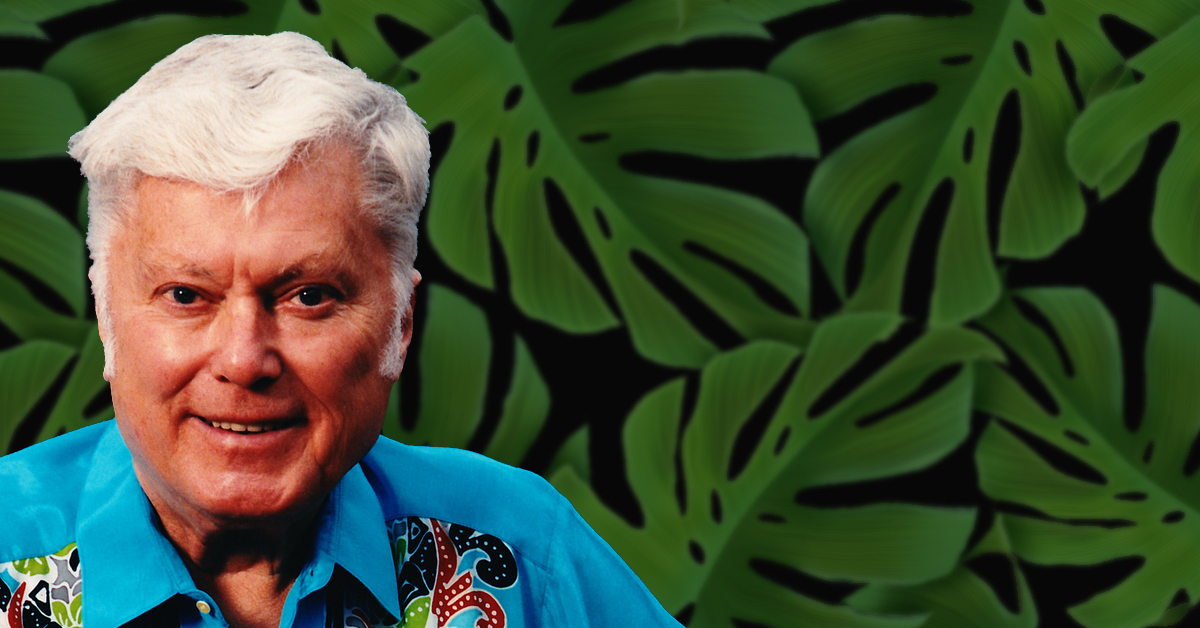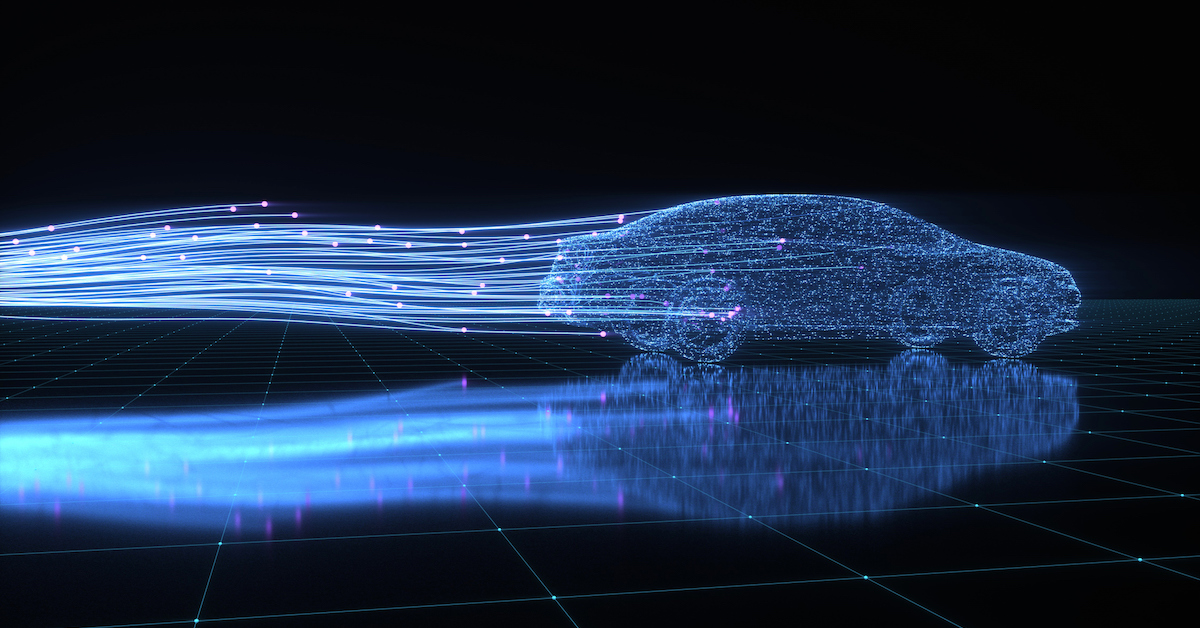As Seagate celebrates our 40th year, we reflect on our history as innovators, and on the race ahead to solve the needs of the future — an ever-expanding datasphere. No look at Seagate’s accomplishments and amazing opportunities ahead would be complete without recognizing our founder, Al Shugart, who was remembered by Executive Chairman Steve Luczo in this article last month. Today we visit with Seagate veterans Finis Conner and Don Waite, longtime executive assistant Karen Seifert, and Seagate CEO Dave Mosley who share their memories of Shugart and reflect on his legacy.
Finis Conner, Seagate co-founder and founder of Conner Peripherals
Among technology industry veterans, Finis Conner has a unique perspective on Al Shugart, having worked with him as an early business partner and later as a sometime competitor. In 1973 Conner joined with Shugart as a co-founder of Shugart Associates, a leading floppy disk drive manufacturer later acquired by Xerox. He came to Shugart in 1979 with the idea to build a 5.25-inch hard disk drive. At the time, storage for personal computers was based on 5.25-inch floppy disks; Shugart and Conner believed that a hard drive with the same physical size but a much greater capacity would find an eager market.
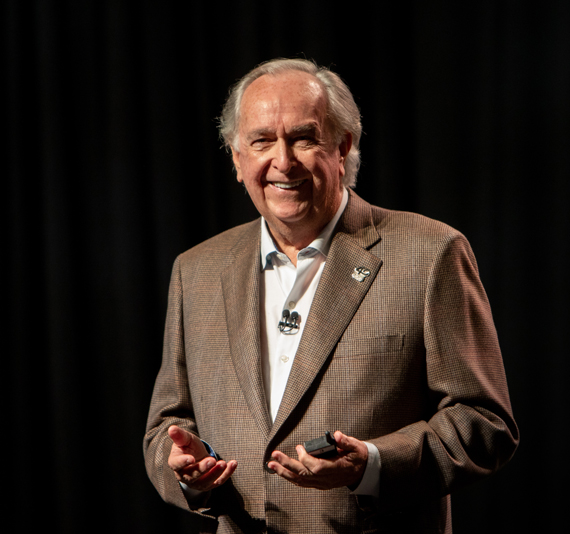
Finis Conner speaking at Seagate’s most recent worldwide sales conference.
That first product was the ST506, a 5.25-inch drive that held 5MB of data, and became a big seller for Seagate. Conner remembers taking a prototype of that drive to show Steve Jobs at Apple Computer. “Steve liked what he saw, and Apple became our first customer,” he said.
Conner recalls Shugart as a charismatic personality with a knack for attracting top technical talent.
“Al was kind of like the Pied Piper for the technical community,” said Conner. “He had that ability to communicate very effectively with engineers, and he gave them the leeway to do what they do best. Al could assess technology trends very quickly, see what was possible and lead a team to go after it.”
Conner left Seagate after a disagreement with other members of the leadership team over the direction of the company. He retired, started a family, and then came back to form his own storage company, Conner Peripherals, which focused on 3.5-inch hard drives.
“We were very strong in the mobile-computing market—laptops and smaller form-factor computers,” he said. “My relationship with Al was never as cantankerous as the press liked to portray it. I always had respect for Al, and I think that was mutual. We just didn’t see eye-to-eye on where the world was going.”
A decade later, Seagate acquired Conner Peripherals in 1996, to become the world’s largest independent HDD maker.
“Forty years is a major deal,” said Conner of Seagate’s longevity. “There are companies like Digital Equipment, Compaq, Sun and others who were all major players, and they’re no longer around like Seagate is today. I think Seagate is dramatically underappreciated and valued today. Think of some of the largest cloud companies around—Microsoft, Google, Facebook, you name it—and where would they be without Seagate’s storage capacity and performance?”
Don Waite, former longtime Seagate CFO
Don Waite joined Seagate in 1983 as the company’s chief financial officer, and it wasn’t long before Waite got a taste of Shugart’s direct, “straight-from-the-hip” style.
“I went into his office one day and Al was reading the Wall Street Journal and he pointed to an article and said, ‘That company will go out of business.’ I asked him why, and he said, ‘You should never name your CFO as your new CEO.’ That was typical Al. There was no meanness intended by it, and I didn’t take it as an insult. He just said it as a statement of fact.”
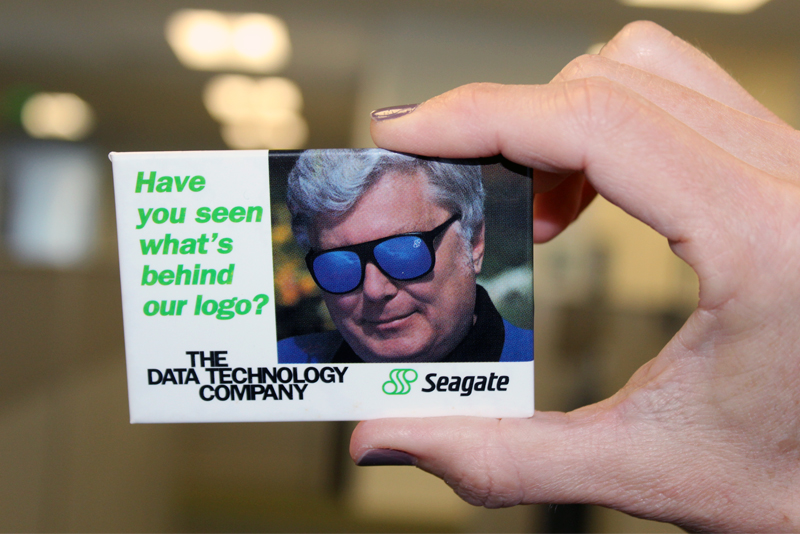
Like many others who worked closely with Shugart, Waite remembers him as “upbeat and positive, no matter how bad things were at the time—he was an optimist.”
As an example, Waite recalled a meeting he had with Shugart about acquiring Imprimis Technology, the hard drive division of Control Data Corporation, in 1989.
“I asked Al how we were going to pay for it, since we didn’t have enough money,” Waite said. “Al just said not to worry about it—we’d find a way. And sure enough, we did. That was a life-changing event, and one that probably saved the company.”
Waite recalled how Shugart was personable with everyone he met.
“Employees liked him a lot,” Waite said. “Even when Al and I went through a period where we weren’t talking for a while, I still liked him! It was hard not to like Al. He wasn’t really a creator in the sense of being an inventor of technology. He was someone who could recognize a good idea and bring it to the market. To Al’s credit, he always gave Finis the recognition for coming up with the idea of the first 5.25-inch hard drive.”
Karen Seifert, executive assistant to Al Shugart
Among longtime employees who knew Al Shugart well, Karen Seifert is in a class of her own—she worked directly for Shugart both at Seagate and in his next venture after he left the company.
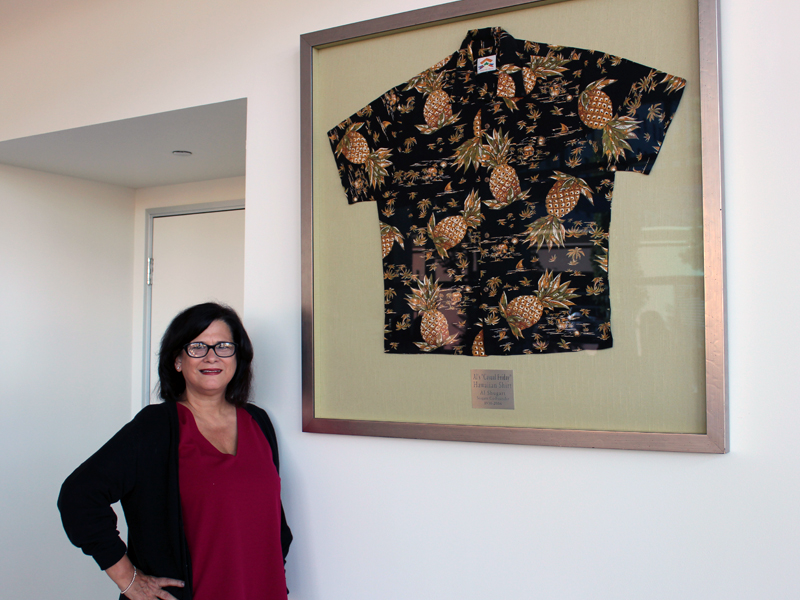
Karen Seifert with one of Al Shugart’s many tropical shirts, on display in the lobby at Seagate in Cupertino, California.
Seifert, who joined Seagate in 1982 as a final test technician in Scotts Valley, became Shugart’s executive assistant in 1991. She then went to work for Shugart when he formed Al Shugart International, a consulting company, in 1998. Seifert, who rejoined Seagate as an administrative assistant after Shugart’s death in 2006, remembers her former boss fondly as a colorful personality.
Many of those conversations would take place over coffee in the cafeteria or outside during cigarette breaks. And after hours, Shugart and other employees could often be found at Malones, a popular Scotts Valley restaurant and bar just down the street from Seagate (and also known as “Building 13” by employees). Seifert said Shugart and other executives had a red telephone installed at Malones so they could speak with colleagues in Southeast Asia after hours when needed.
Many of Shugart’s early leadership practices helped define the company as it is today, Seifert said.
“Al always stressed that shared values are the key to success,” she recalled. “Communication, continuous learning and improvement were very important to Al, and it’s still part of the Seagate culture to this day. Al always felt it was important to be proud of your achievements, whether it was work-related or in your home life, but never in a boastful way.”
Asked for one enduring memory of her old boss, Seifert recalls these words: “I remember Al saying often: be a person of your word and, most importantly, be a nice person.”
Dave Mosley, Seagate CEO
Seagate’s CEO didn’t know Shugart as well as Conner and Waite, but Seagate’s founder made a lasting impression. Mosley joined Seagate in 1996 after the acquisition of Conner Peripherals.

Dave Mosley speaking at Seagate’s annual worldwide sales conference.
“The thing I always remember about Al was his words of wisdom,” Mosley said. “He used to say ‘the smartest companies are the ones that watch their cash,’ and that’s contributed to our staying power. Al was down to earth and no-nonsense like that. I don’t know if he started the trend of dressing down in Silicon Valley, but the Hawaiian shirts were definitely part of who he was. It’s not the sharpest-dressed person who’s going to be successful. It’s about what you say, how you act and how you treat customers.”
Mosley also remembers Shugart traveling to visit Seagate’s far-flung operations—a lot.
“Al spent a lot of time on airplanes,” Mosley said. “It’s a huge time commitment to travel as much as he did, and we now have technology where you don’t have to do that, but Al made it a point to see each of our sites once a quarter.”
Mosley also remembers Seagate products that weren’t successful and markets that didn’t take off, but the company always made it through those valleys. Mosley believes if Shugart were alive today, he’d be proud of what he saw.
“It’s not like we haven’t made mistakes,” Mosley said. “But we’re still here as a company, 40 years later. And in many ways, we’re a much different company because of all the acquisitions that happened on Al’s watch and after he left Seagate. Imprimis and Conner were part of that, as well as Maxtor and Samsung’s HDD business, LaCie and LSI’s flash businesses. A lot of us joined Seagate through these acquisitions, and the company continues to evolve to this day. We’re still here and relevant, and that would have been Al’s dream, too. He’d be very proud to see Seagate—the company he built—still evolving and moving forward.”


